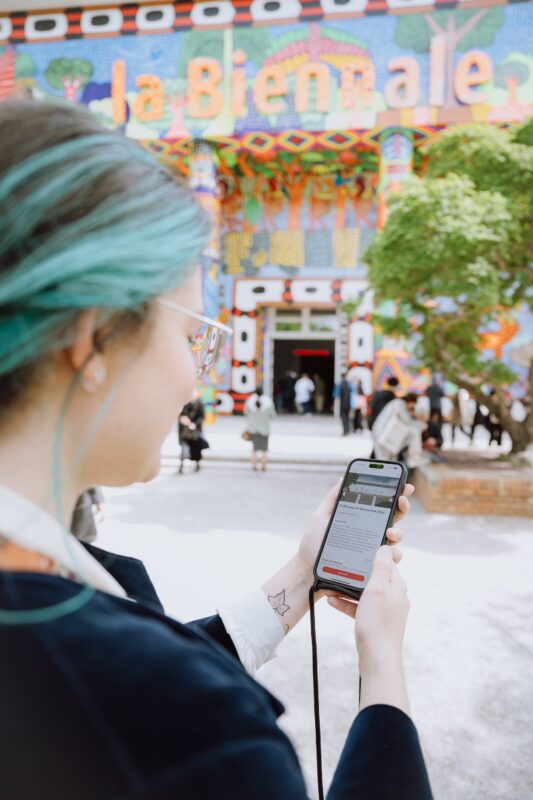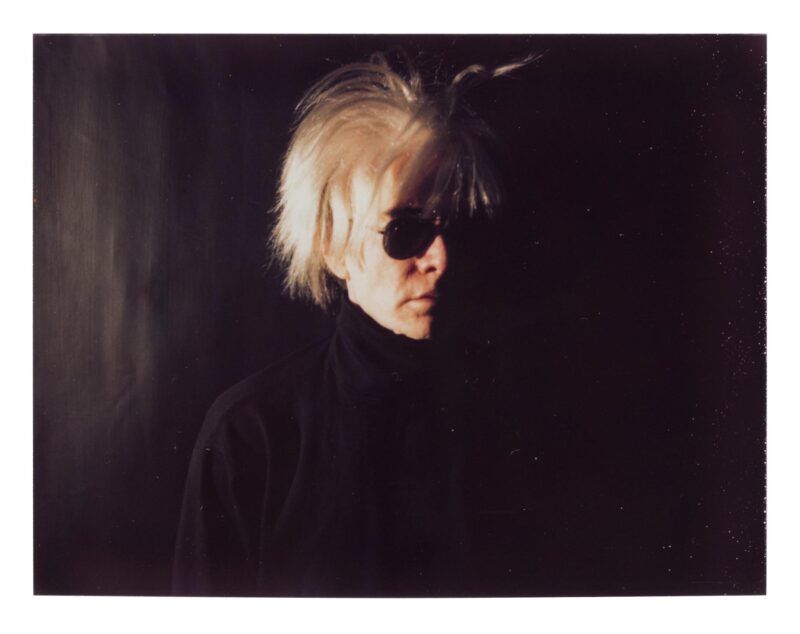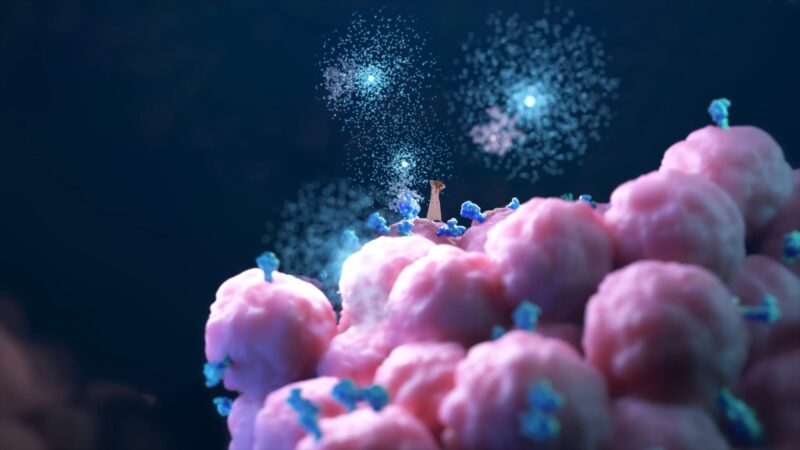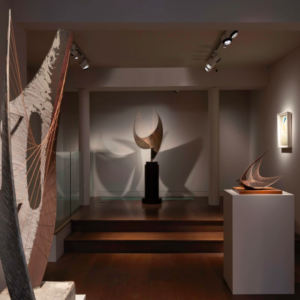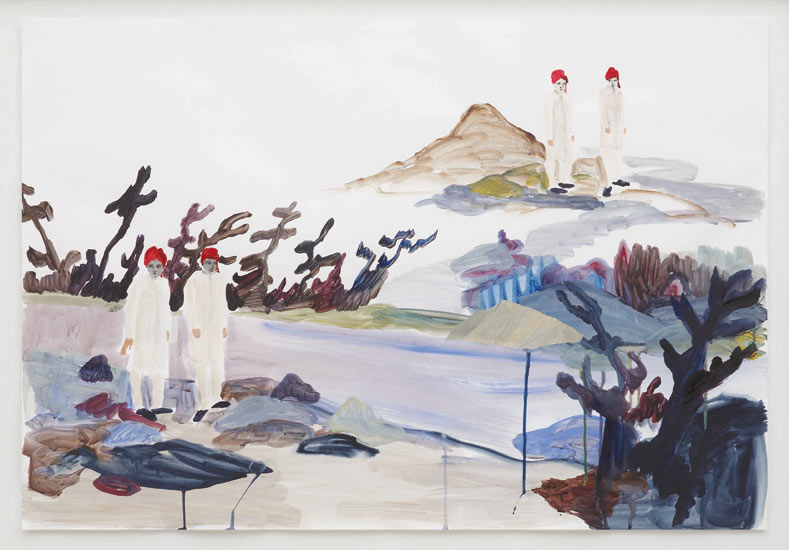
‘Real force of personality’: They Visited Twice, 2012 by Freya Douglas-Morris. Photograph: Courtesy of Bloomberg New Contemporaries images/ICA
New Contemporaries is old – now into its seventh decade in fact. It started in 1949 as a showcase for art school graduates in the postwar doldrums and over the years has identified many young stars of the future, from David Hockney and Patrick Caulfield in the early 60s to Peter Doig and Mark Wallinger in the early 80s. It is a fine, if controversial, enterprise.
The controversy generally centres on who, rather than what: on who should make the selection from the annual degree shows, and how. Traditionally, the Young Contemporaries (so-called at the beginning) were chosen by older artists and art specialists; the director of the National Gallery was involved in the first show, for instance, and critics and curators had some say for a while.
But in the 70s, when the name was changed to appear less ageist, New Contemporaries was taken over by the undergraduates themselves – a show for students run by students, free of establishment values. For four years there was no exhibition, and rumours of in-fighting between colleges; and even when an independent committee was set up there were years without funding, selection or venue.
The New/Young Contemporaries has been in and out of the ICA several times, and its sponsors have included the Arts Council and (briefly) British Telecom. For the past decade or so it has been known as Bloomberg New Contemporaries and has come to be judged by artists who have taken part in previous shows.
So what you see is the contemporary art admired by contemporary artists, which ought to put it well beyond Bloomberg’s market-driven interests. But I doubt that anything is very far outside the market these days, especially when it has been tipped by artists as well-known as the fashionable sculptor Nairy Baghramian, or the film-maker Rosalind Nashashibi, who had a wonderful solo show in this very building a few years ago.
As to the selection process, to my mind it is now about as democratic as it gets. Anyone graduating (or postgraduating) from any British art school may apply. The judges know nothing about the competing artists, not their name, age or college. They view the work digitally to begin with – there were 1,500 submissions this year – and whittle down to smaller groups of entrants. Vans shoot up and down collecting the actual works, which are then intensively viewed (in this case) over a seven-day period, to select this year’s 29 chosen Contemporaries.
The selectors may know nothing, but the rest of us are abundantly informed. Indeed the value of New Contemporaries is twofold. The show is a portrait of the kind of work being made in art schools today, but it is also a snapshot of the schools themselves.
For anyone contemplating a postgraduate degree, for instance, almost half of the 2012 Contemporaries were at the Royal College of Art, apparently as regnant as ever. Goldsmiths and Chelsea still hold strong for undergraduates too, but Brighton scores remarkably high.
Nearly all of the artists are in their late 20s or 30s, a good many of them Irish, others from Togo, Korea, Sweden and Hong Kong. As in life, so in art: this is a properly international society.
But let’s return to the controversy. Shouldn’t the selectors flog round the country and look at the degree shows in person instead of relying on teensy reproductions that give no sense of a work’s presence in a gallery? And doesn’t digital reproduction favour digital art: photographs, for instance, or videos, of which there are a number in this show?
And if that much travelling is too expensive or tricky to coordinate, then shouldn’t there at least be equality for all entrants before the public from the start? It wouldn’t be hard to achieve, as the Saatchi Gallery has shown. If the judges are considering computer images then why not the rest of us: let all 1,500 entries be posted online.
As it turns out, video and photography are the least of the 2012 New Contemporaries. This year is strong, but especially strong in good old-fashioned painting. By which I mean, to my surprise, a return to the ancient days of modernism as they may well seem to artists graduating in the next century.
Take the surging botanical growth pressing against the limits of the picture frame in the work of Jennifer Bailey. “The force that through the green fuse drives”, interpreted in powerfully gestural brushstrokes, her painting seems to conflate hints of Dylan Thomas’s great opening line with Arshile Gorky.
Jack Brindley‘s fierce pair of black-and-white abstracts look as if they have been made like a Rorschach print – one canvas pressed against the other to produce a double exclamation in paint, with more than an echo of Franz Kline.
These were painted in silicon, and Brindley also works with the unlovely medium of grout. There is a good deal of experimentation with materials on show. Jackson Sprague paints in watercolour on Crystacal plaster to get a beautiful fresco effect. And Samuel Taylor’s Portrait of Silenus appears on paper pasted directly on to the wall, a classical statue crumbling back to raw stone as if becoming one with the masonry.
Freya Douglas-Morris’s large watercolour They Visited Twice has real force of personality. Two strangers in a strange land appear twice over: in one vignette they drift like a cloud form in the distance, in the other they are like willow pattern figures, hovering in a floating world of watercolour. With its subtle palette and delicate vision, this is a mysterious reprise of ukiyo-e.
Tyra Tingleff‘s abstract oils hint at rainy darkness in some urban jungle, or possibly a real forest – ambiguity being part of the content. Max Ruf‘s big post-Pollock canvas, an all-over field of gorgeous colour and muzzy mark-making, seems to thicken, and deepen, as you look.
And Jan May‘s sweet post-pop paintings showing zippy pictograms on solid-coloured backgrounds – a palm frond, a cluster of grape-like discs – amount to a vocabulary of pictograms when shown in sequence.
Indeed, although there were many more artists in last year’s show, this time there are many more works by each entrant, so that one sees them in greater depth. And so Bloomberg New-Young Contemporaries continues to evolve. If it acts as a weathervane, a crystal ball or the paddock at a racecourse where tipsters may study form – all comparisons that are regularly made – then one might guess at a resurgence of painting, for it certainly holds centre stage at the ICA. But this is only the choice of a small jury, of course, and in any case the art of painting has never for one second died away.
guardian.co.uk © Guardian News & Media Limited 2010
Published via the Guardian News Feed plugin for WordPress.

